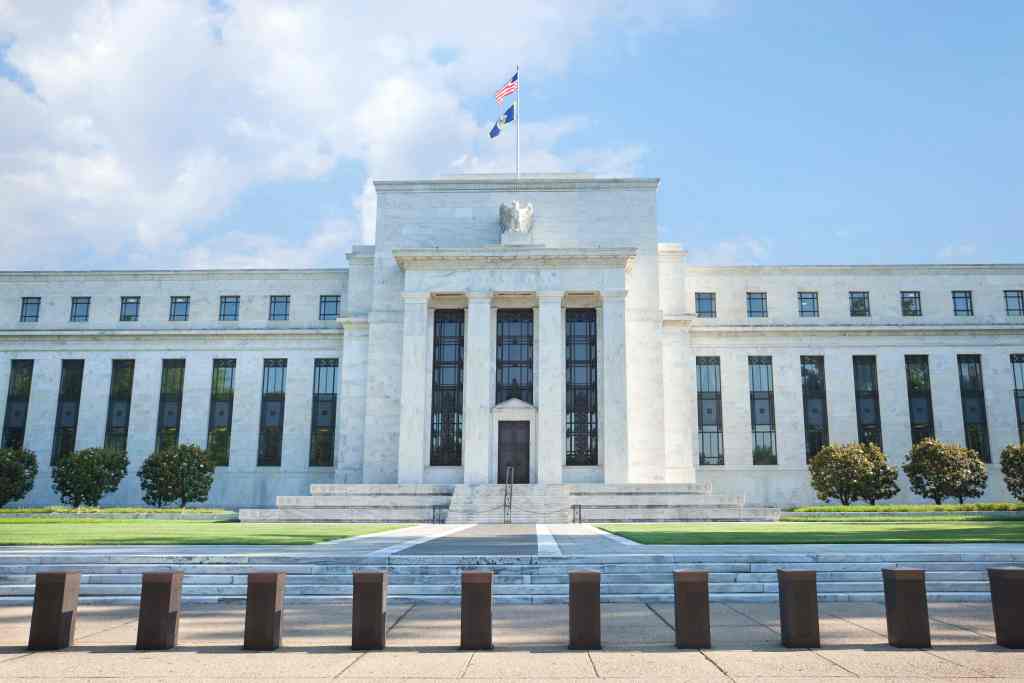
On Monday, March 10th, 2023, California’s Department of Financial Protection and Innovation (the state administrator of California) officially shut down Silicon Valley Bank (SVB) and appointed the Federal Deposit Insurance Corporation (FDIC) to manage the bank’s business moving forward. The event resulted in the second-largest bank failure in US history and the most significant one since the Great Recession of 2008. Not surprisingly, SVB customers are highly concerned, the securities markets are volatile, and investors are uneasy.
This blog will cover the following while connecting these real world scenarios to FINRA and NASAA test concepts:
Banks receive deposits from customers, vow to protect and safekeep their money, and pay them interest. Then, the bank invests the majority of its customer deposits. Investments could include loaning those funds to other customers (e.g., small business loans or personal loans) or purchasing securities.
A bank failure occurs when customers request withdrawals exceeding the amount of liquid cash the bank maintains. The two leading factors are almost always the same – bad bank investments and a “run on the bank” (many customers request withdrawals at once).
How banks work and why they fail (A walkthrough of the SVB collapse) – Achievable
Let’s demonstrate this with an example using small numbers. Let’s assume ten customers give you $100 each, totaling $1,000 in overall deposits. You promise to keep their money safe and offer them a 2% annual interest rate*. To make money, you’ll need to invest most of those funds. On the other hand, you’ll want to keep some liquid cash on hand in case one or a few of your friends request withdrawals.
*For sake of simplicity, let’s assume the interest is paid directly to the customer and is not reinvested or compounded.
To be safe, you invest $600 of the $1,000 in deposits, representing a 40% reserve requirement* (meaning you’re not investing 40% of customer deposits). You place all $600 in “safe” long-term government bonds.
*A 40% reserve requirement is quite conservative. Most banks today maintain around a 10% reserve requirement.
All is going well in the first year, and you’re making a decent amount of money on your investments. You owe your customers $20 in annual interest (2% x $1,000), but assume you make $50 in interest received from your government bonds in the first year. This demonstrates how banks make profits. They make “the spread” between the interest paid on customer deposits and the returns earned on bank investments ($30 in this example). Additionally, your original ten customers have yet to request withdrawals.
Things suddenly take a turn for the worse in the second year. Due to unforeseen circumstances, the value of the government bonds declines from its original $600 value to $400. Additionally, three of your ten depositing customers request total withdrawals ($300 total). While fulfilling their request, you seem anxious and tentative. What if your other customers pull money out as well?
Word spreads about your tense encounter with the three customers. The following day, six of the remaining seven customers request complete withdrawals totaling $600. This is a huge problem! Let’s account for the money up to this point:
Total assets = +$530
Your remaining customers are requesting $600 in withdrawals when you only have $530 at your disposal. On top of that, $400 of the $530 is tied up in long-term government bonds. All you can do is liquidate the bonds to free up some cash, locking in the $200 loss ($600 original value vs. $400 sales proceeds). Unfortunately, you still don’t have enough money to fulfill customer withdrawal demands. Here’s the final accounting:
Total = -$70
A bank failure occurs when customers request withdrawals exceeding the amount of liquid cash the bank maintains. The two leading factors are almost always the same – bad bank investments and a “run on the bank” (many customers request withdrawals at once).

The example above represents an elementary version of what happened with SVB. Instead of $1,000 in deposits, SVB maintained over $200 billion at the end of 2022. Instead of ten customers, SVB had over 40,000. Otherwise, many of the same circumstances unfolded very similarly.
SVB invested a significant amount of its customer deposits in long-term Treasury securities between 2020 and 2022. Treasury securities like T-notes and T-bonds are typically considered “safe,” at least in terms of default (credit) risk. Investors holding these securities to maturity are virtually guaranteed to get their money back (plus interest). However, T-notes and T-bonds are not safe from inflation (purchasing power) or interest rate risk. When inflation or interest rates rise, debt security values decline. Additionally, those with longer maturities are impacted the most.
On the investment side, SVB was the victim of circumstance and poor risk management. Inflation rates skyrocketed in 2022 to 40 year highs, and the Federal Reserve began systematically increasing interest rates. And thus, SVB was exposed to the perfect storm – holding longer-term debt securities while experiencing significant inflation and interest rate risk.
On top of that, the bank operated most of 2022 without a person in charge of overseeing risk management. There are many ways to hedge (protect) against bond-related risks, including the utilization of yield-based options. In particular, the purchase of yield-based calls would have offset at least some of the losses incurred by rising inflation and interest rates. The complete picture continues to unfold, but effective risk management measures were not seemingly taken.
While this was happening, some of SVB’s customers were getting concerned. After all, SVB serves some of the most technically-minded people, as many of their customers work in venture capital and the start-up industry. The most prominent voice was that of Peter Theil’s Founder’s Fund, which advised its clients to withdraw funds from SVB after encountering service issues with the bank. Once word began to spread, a classic run on the bank unfolded.
On March 9th, 2023 (the day before the bank was closed), customers requested $42 billion in withdrawals. SVB tried its best to fulfill the requests as it sold off its investment inventory (at a $1.8 billion loss), borrowed billions, and attempted a quick sale of stock in an additional public offering (APO). Despite their efforts, the bank had a $958 million negative cash balance on March 10th.
FDIC (Federal Deposit Insurance Corporation) insurance is government-mandated insurance all US banks must participate in. It covers $250,000 of deposits on a per-customer, per-bank basis in case of a bank failure. For example, assume a person held a $200,000 checking account and a $100,000 savings account at SVB. FDIC insurance will only cover $250,000 of their deposits, leaving $50,000 uninsured.
In SVB’s case, there was a big depositor problem. At the end of 2022, almost 90% of customer deposits were uninsured. When this occurs, customers with uninsured deposits become general creditors of the bank and may not receive all their deposits back. That is part of what made many SVB customers fear for the safety of their deposits.
In SVB’s case, there was a big depositor problem. At the end of 2022, almost 90% of customer deposits were uninsured. When this occurs, customers with uninsured deposits become general creditors of the bank and may not receive all their deposits back. That is part of what made many SVB customers fear for the safety of their deposits.
How banks work and why they fail (A walkthrough of the SVB collapse) – Achievable
FDIC insurance does not provide coverage to SVB investors (as opposed to depositors). The bank’s holding company had outstanding publicly traded stock (ticker: SIVB). While the stock was one of the market’s best performers in 2021 (up nearly 75% in one year), it has since collapsed and has been halted from trading (as of Monday, March 13th). It’s conceivable stock investors will lose virtually all their capital, none of which will be covered by FDIC.

With SVB’s size, many were worried their problems could impact the entire financial system (like 2008). To prevent system-wide issues, the FDIC (with help from the Federal Reserve and US Treasury) guaranteed all customer deposits – both insured and uninsured. As of today, most SVB customers have access to their funds again.
This move represents a notable change in the government’s approach. Since 2017, there have been ten other notable bank failures, none of which received the same treatment. Customers of those banks with uninsured deposits were subjected to the usual rules – they became general creditors of the bank. Many with uninsured deposits didn’t get back their full account values.
Bottom line – SVB customers with uninsured deposits got a very lucky break.
Analysts seem to be mixed as to whether SVB’s failure is the beginning of a “2008-esque” situation. The US government is obviously taking the situation seriously by covering uninsured deposits, and even President Biden is attempting to calm the American public:
“Americans can have confidence that the banking system is safe. Your deposits will be there when you need them. Small businesses across the country that deposit accounts at these banks can breathe easier knowing they’ll be able to pay their workers and pay their bills, and their hard-working employees can breathe easier as well.”
President Joe Biden, March 13, 2023
SVB’s collapse spooked investors, leading other bank stocks to steep losses over the past week. The SPDR S&P Bank ETF (ticker: KBE), which tracks nearly 100 US banking stocks, is down over 22% over the past week. Signature Bank, a New York-based commercial bank collapsed shortly after SVB. First Republic Bank stock (ticker: FRC) was down over 60% on Monday, March 13th alone. SVB’s collapse also spooked the other banks, which are now making changes or opening lines of credit to avoid suffering the same fate.
The future is unpredictable and uncertain. Other banks may experience similar circumstances, resulting in more bank failures that may drag down the economy further. On the other hand, SVB’s situation may be an aberration, making today’s losses in the banking sector a buying opportunity for contrarian investors. Either way, we’ll stay tuned and relate these real world circumstances to test concepts.

We teach you how to use hedging strategies in your options trading to limit your risk. This is both useful for retail traders and a key options topic tested on FINRA and NASAA exams.

We teach you how to use hedging strategies in your options trading to limit your risk. This is both useful for retail traders and a key options topic tested on FINRA and NASAA exams.

Unsexy but mighty, bonds represented $39T in net value WW in 2015, while stocks were worth approximately $26T. Basic Wisdom’s Brandon Rith walks you through how they’re handled in the wealth management profession.